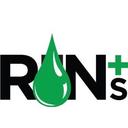New Ontario biodiesel mandate falls short, troubles producers

April 14, 2014
BY Ron Kotrba
The government of Ontario, Canada, issued its new biodiesel mandate regulations for the province April 1, and some biodiesel stakeholders, including members of the Ontario Biodiesel Producers Association, are frustrated and concerned with how the government is calculating its percentages. While industry stakeholders anticipated a 2 percent volumetric mandate, increasing to 4 percent by 2017, some Ontario producers say the provincial government developed its own system of calculations for greenhouse gas emissions for blended diesel, and the formula used “reduces the suggested 2 percent mandate to a true effect of less than a quarter of that volume,” OBPA stated. “As a result, it may significantly reduce biodiesel use and production.”
“They are using funny math to show a 2 percent and 4 percent,” Michel Laporte, Methes Energies Canada Inc.’s CEO and chairman of the board, told Biodiesel Magazine. “If you use the formulas found in the regulation, the best you can get is 0.63 percent if using canola/soy and 0.25 percent if you use tallow, instead of a true 2 percent. In other words, the mandate is not based on volume. They are misleading the Ontario people with headlines that are not even close to what the actual mandate is. The majority of producers in Ontario are not happy campers. It’s a joke.”
Paul Grenier, executive director of the OBPA, said, “The announcement is a disappointment to the majority of Ontario biodiesel producers as we expected a true volume-based mandate. The province of Ontario lost an opportunity to be a national leader in the renewable fuels policy with this regulation by using their own version of a GHG calculating method with averaging factors and not using volumetric targets, as has been the practice of other jurisdictions adopting a biodiesel blending mandate.” The result is Ontario, which has the highest volume of on-road diesel use in Canada, has a mandate for biodiesel that will be the lowest in the country, the organization stated.
Advertisement
W. Scott Thurlow, president of the Canadian Renewable Fuels Association, feels differently about the regulations, saying, “This is fantastic news for our renewable fuels industry as well as Ontario. [The province] has created the gold standard for biofuels regulations. By focusing on reducing emissions, this regulation will provide several options for compliance for the obligated parties. Ontario’s Greener Diesel requirement is a model for other jurisdictions the world over.”
OBPA has gone on record saying it has difficulty understanding the support given to this regulation by other stakeholder groups from agriculture and the CRFA. “This regulation does little for Ontario biodiesel producers and does not provide any significant increase in demand for Ontario-produced grain oils to be used as feedstocks,” the OBPA stated.
“The regulation that was announced is seen to favor the demands of oil producers, fuel blenders, and truckers in the province more than the biodiesel producers, environmentalists, and farmers,” said Laporte. “It is understandable that the CRFA, with only one member plant producing biodiesel in Ontario and also oil companies as part of its membership, would support such a weak regulation.”
Advertisement
CRFA's Thurlow said the first phase of the mandate will require as much as 160 million liters (more than 42 million gallons) of renewable content, creating a potential market for over 680,000 tons of soybeans. “As the Greener Diesel requirement increases to 4 percent in the future, the potential markets for Ontario production will also grow,” he said. “By linking the emissions profile of the feedstock and the processes which create the fuel, the regulation ensures an environmental benefit by rewarding the fuels which reduce emissions by the greatest margin. The addition of a GHG qualifier (versus merely a volume requirement) rewards the best, verifiable, GHG-reducing fuels and actually deters product from being transported into Ontario from great distances.” Thurlow added that before this regulation, there was no required demand for biodiesel production in Ontario.
OBPA said producers in the province will struggle to survive under this reduced volume mandate, and must now find alternative markets for their biodiesel. “We will continue to work with the government and hope to protect and expand the jobs and investment in the Ontario biodiesel production industry,” Grenier added.
OBPA members include Methes Energies Canada Inc. located in Mississauga and Sombra, Great Lakes Biodiesel in Welland, and Noroxel Energy Ltd. in Springfield.
To view the regulations and calculations, click here.
Related Stories
The U.S. EPA on March 24 asked the U.S. District Court for the District of Columbia to dismiss a lawsuit filed by biofuel groups last year regarding the agency’s failure to meet the statutory deadline to promulgate 2026 RFS RVOs.
The USDA on March 25 announced it will release previously obligated funding under the Rural Energy for America Program To receive the funds, applicants will be required to remove “harmful DEIA and “far-left climate features” from project proposals.
2025 International Biomass Conference & Expo concludes as largest event in a decade and unparalleled industry insights
The 2025 International Biomass Conference & Expo, held March 18-20 in Atlanta Georgia, featured of insightful discussions, cutting-edge technology showcases, and unparalleled networking opportunities.
Nearly 1.52 billion RINs were generated under the RFS in February, down more than 25% when compared to the 2.04 billion that were generated during the same month of last year, according to data released by the U.S. EPA on March 20.
The U.S. EPA on March 20 published updated SRE data showing that four new SRE petitions have been filed under the RFS in the past month. According to the agency, 156 SRE petitions are currently pending.
Upcoming Events










